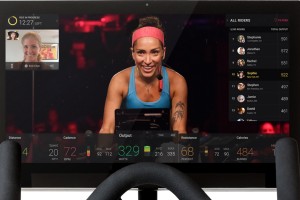By all accounts, the vision of the connected home is still alive and well. That futuristic home where appliances are self-aware and interconnectivity between the physical and online worlds is seamless. But despite all the hype and grandiose predictions, that vision is still a bit blurry.
Today, much of the discussion has shifted to smart home systems, which can include everything from energy management and climate control systems, to lighting and home appliances, to security and access control. And some consumers are starting to embrace smart thermostats, smart light bulbs and similar devices.
According to research from Berg Insight, the number of smart homes in North America exceeded 12 million by the end of 2015. Yet this study defined a smart home system as one using a smartphone app or a web portal for a user interface, and excluded devices or “things” that are controlled with sensors, remote controls or machine-to-machine (M2M) communications. In other words, not exactly the full realisation of Internet of Things (IoT) connectivity, says Sanil Pillai, director at Infostretch Labs.
Smart devices certainly have a place in the modern home. Nifty, connected devices like the Amazon Echo respond to voice commands, making online shopping or streaming your favorite music as simple as possible. Smart lightbulbs, thermostats and refrigerators offer a “gee-whiz” factor that makes them fun to own.
But smart appliances can be dull if they don’t serve a useful purpose that justifies their cost. And this, in large part, is why the true connected home hasn’t become reality yet. Rehashing existing use cases by bolting on connectivity offers little value-add in and of itself. Do you really need a $5,000 refrigerator to tell you what supplies are running low?
IoT business case for business

Regardless of whether you say connected home or smart home, the home is not where the heart of the IoT is at this point in time. Instead, the interconnectedness of smart things —products, machines, buildings — has opened up a brave new world of possibilities for businesses across a broad range of industries.
In comparison to consumers and the connected home, businesses can more easily afford the cost of investing in the IoT. From aviation, energy and manufacturing to logistics and maintenance, the Industrial IoT (IIoT) has gained considerable traction by delivering new functionality and value-added benefits. Cost savings enabled by process improvements offer powerful motivation for the IIoT, as does the prospect of improved maintenance for increased safety and compliance.
However, the most valuable aspect of the IIoT is not the network itself; rather, it’s the rich data available to be mined and analysed. The IIoT is capable of generating massive amounts of data as a byproduct of embedding and interconnecting sensors in assets, equipment and buildings. So much data, in fact, that global revenues from the integration, storage, analysis and presentation of IoT data is expected to exceed $30 billion by 2021, according to ABI Research.
Intelligent IIoT analytics
An early precursor to the IoT, aircraft manufacturers have used embedded sensors in engines for quite some time. Acting as predictive maintenance systems, these sensors collect data to evaluate performance and check the health of expensive aircraft engines, increasing safety, avoiding costly repairs and minimising downtime for maintenance. Likewise, IIoT real-time analytics can be used to increase the efficiency of manufacturing processes across a range of industries, enabling a more cost-effective raw material supply chain and assembly of higher quality products.
As cities around the world deploy smart grid technology, this ubiquitous connectivity allows rich datasets to become available for various uses, from mapping traffic flows to monitoring crime scenes. Analysing this data could help cities improve management of traffic, available parking and other resources.
The ability to glean insights from analytics and act on those findings is what enables the true promise of the IoT to be fully realised, helping businesses make better decisions and respond more quickly to opportunities in the marketplace. New industrial use cases that offer quantifiable, justifiable return on investment are incentivising development of the IoT in ways that a smart lightbulb hasn’t accomplished.
Sharpen the Focus
We’re only just beginning to envision all the use cases that will be enabled by the IoT. New interface technologies will simplify and streamline connectivity, such as Virtual Reality (VR), Augmented Reality (AR) and holograms for training simulations or diagnostic healthcare. And as voice recognition technology approaches 95% accuracy, adoption of voice-activated interfaces will accelerate exponentially, both at work and at home.
Taking a page from the industrial playbook, before the vision of the connected home can be brought into sharp focus, it’s important to identify compelling use cases where connectivity can provide a clear edge. For example, a fully connected kitchen that recommends tasty, nutritious recipes based on a real-time assessment of food available in both the pantry and refrigerator would be a handy time-saver.
Harnessing data and meaningful insights from connected devices to deliver value-added services to the consumer is a business model that will thrive… Eventually.
In the meantime, most of us will have to be satisfied with light bulbs that are only bright, not smart.
The author of this blog is Sanil Pillai, director at Infostretch Labs.
Comment on this article below or via Twitter: @IoTNow_ OR @jcIoTnow










